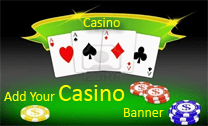Bingo is a game of chance where randomly-selected numbers are drawn and players match those numbers to those printed on cards. The first person to have a card where the drawn numbers form a specified pattern is the winner and calls out "Bingo!" to alert others to the win. Bingo is a game used for legalized gambling in some countries.
Description of the Game
 Each Bingo player is given a card
marked with a grid containing a unique combination of
numbers and, in some countries, blank spaces. The
winning pattern to be formed on the card is announced.
On each turn, a non-player known as the caller randomly
selects a numbered ball from a container and announces
the number to all the players. The ball is then set
aside so that it cannot be chosen again. Each player
searches his card for the called number, and if he finds
it, marks it. The element of skill in the game is the
ability to search one's card for the called number in
the short time before the next number is called.
Each Bingo player is given a card
marked with a grid containing a unique combination of
numbers and, in some countries, blank spaces. The
winning pattern to be formed on the card is announced.
On each turn, a non-player known as the caller randomly
selects a numbered ball from a container and announces
the number to all the players. The ball is then set
aside so that it cannot be chosen again. Each player
searches his card for the called number, and if he finds
it, marks it. The element of skill in the game is the
ability to search one's card for the called number in
the short time before the next number is called.
The caller continues to select and announce numbers until the first player forms the agreed pattern on their card and shouts out the name of the pattern or bingo. One of the most common patterns, called house in the United Kingdom and Australia and full card or blackout in Canada and the United States, simply consists of marking all the numbers on the card. Other common Canadian and American patterns are single line, two lines, centre cross, L, Y, inner square (4 × 4), roving square (3 × 3), and roving kite (a 3 × 3 diamond). On Canadian and American cards lines can be made horizontally, vertically, or diagonally. Inner and roving squares and kites must be completely filled; roving squares and kites may be made anywhere on the card.
Card Variations
Canadian and American bingo cards are 5 × 5 grids of numbers only; dual dab cards have two numbers in each square. Each space in the grid contains a number, except for the centre square, which is considered filled. The highest number used is 75. The columns are headed with the letters of the word BINGO, and the letter is called with the number — for example, B-10, I-25, N-40, G-55, O-70. Numbers 1 to 15 are assigned to the B column, 16 to 30 to the I column, 31 to 45 to the N column, 46 to 60 to the G column, and 61 to 75 to the O column.
In the United Kingdom and Australia bingo cards have three rows and nine columns. Five squares in each row contain numbers ranging from 1 to 90 and the rest are blank. The numbers are usually called quickly, so players rarely play more than one book. A Bingo Book contains all the numbers from 1 to 90, fifteen numbers on each card, five numbers in each row. The first column contains single numbers, the second tens, the third twenties, and so on. Number 90 is placed in the ninth column along with the eighties.
Each card has a unique serial number to permit quick verification by computer.
Culture
Canadian and American games often have multiple bingos for example, the players may first play for a single line, then after that is called continue playing for a full card, then for a consolation full card.
In Canadian and American Halls, players often play multiple cards for each game; thirty is not an unusual number. Because of the large numbers of cards played by each player, most Canadian and American halls have the players sit at tables to which they often fasten their cards with adhesive tape. To mark cards faster the players usually use special markers called dabbers. At commercial halls, after calling the number the caller then displays the next number on a television monitor; bingo cannot be called until that number is called aloud, however. The numbers already called and the patterns being played are also displayed on electric signs.
History
Bingo can be traced back to a game called Lotto, played in Italy in 1530. The bingo casino games name comes from a corruption of the name Beano, the name of a form of bingo played in the United States in the 1920s. Beano was so called because beans were used to cover the numbers.
The Business of Bingo
Bingo is an expanding and highly profitable business in the UK, with many companies competing for the customers' money.
As well as offering the familiar bingo played by marking numbered books, most large clubs have their tables modified for the playing of cash bingo or Coin slots.This is highly profitable for the operator, with a typical "take" of fifty percent of the stake.
Another universal feature of British bingo halls is the presence of "fruit machines". These things combined mean that the unwary customer can easily spend hundreds of pounds in an evening.
As well as bingo played "in house", the larger commercial operators play some games linked by telephone across several, perhaps dozens, of their clubs. This increases the prize money, but greatly reduces the chance of winning due to the much greater number of players.
Yet another operator provides games across all the major chains for the largest prizes of all.
Caller Slang
Although these numbers are amusing and each has its own story, most professional Bingo halls do not use them. If a caller were busy saying "two little ducks", and the number 22 has not yet been said, it is therefore not deemed "called". In an instance where a player may have missed his or her number, and a player is waiting for 22, both players would have valid argument that their number was "called".
There are traditional calls for the numbers. For example:
| Number | Slang Expression <X> |
|---|---|
| 1 | Kelly's Eye |
| 5 | Man Alive |
| 7 | Lucky for Some |
| 8 | One Fat Lady |
| 9 | Doctor's Orders |
| 10 | (current PM)'s Den |
| 11 | Legs |
| 13 | Unlucky for Some |
| 16 | Sweet Sixteen |
| 21 | Key of the Door |
| 22 | Two Little Ducks |
| 23 | Thee and Me |
| 30 | Dirty Gertie |
| 37 | More Than Eleven |
| 45 | Halfway There |
| 51 | Tweak of the Thumb |
| 59 | Brighton Line |
| 64 | Red Raw |
| 66 | Clickety-Click |
| 71 | Bang on the Drum |
| 76 | Trombones |
| 79 | One More Time |
| 81 | Stop and Run |
| 86 | Between the Sticks |
| 88 | Two Fat Ladies |
| 90 | Top of the Shop |
Interesting Facts
- An average British game of Bingo takes between four and four and a half minutes.
- The average speed of a British Bingo caller is 23 numbers per minute.
- The average time to check a winning claim is 30 seconds.
- There is a "caller of the year competition" in which Bingo callers compete for a two week holiday.
Alternate Variations
Two notable modern variations of bingo have achieved some kind of status in American culture:
- Buzzword bingo is also called bullshit bingo.
- Bovine bingo



